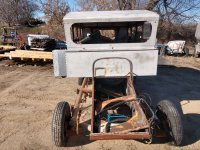Seskelson
I didn't see your first name in the post, but I just purchased a 601 snow cat built in 1963, I live in payson utah and rebuilding it. I would love to ask a few question if possible and get a little history. I was told that most of the 601s were build for the military but mine stills has the original paint which is blue and silver with pin stripping, serial number 10 limited. My name is Lloyd Stanton 801.623.9079
I didn't see your first name in the post, but I just purchased a 601 snow cat built in 1963, I live in payson utah and rebuilding it. I would love to ask a few question if possible and get a little history. I was told that most of the 601s were build for the military but mine stills has the original paint which is blue and silver with pin stripping, serial number 10 limited. My name is Lloyd Stanton 801.623.9079


















